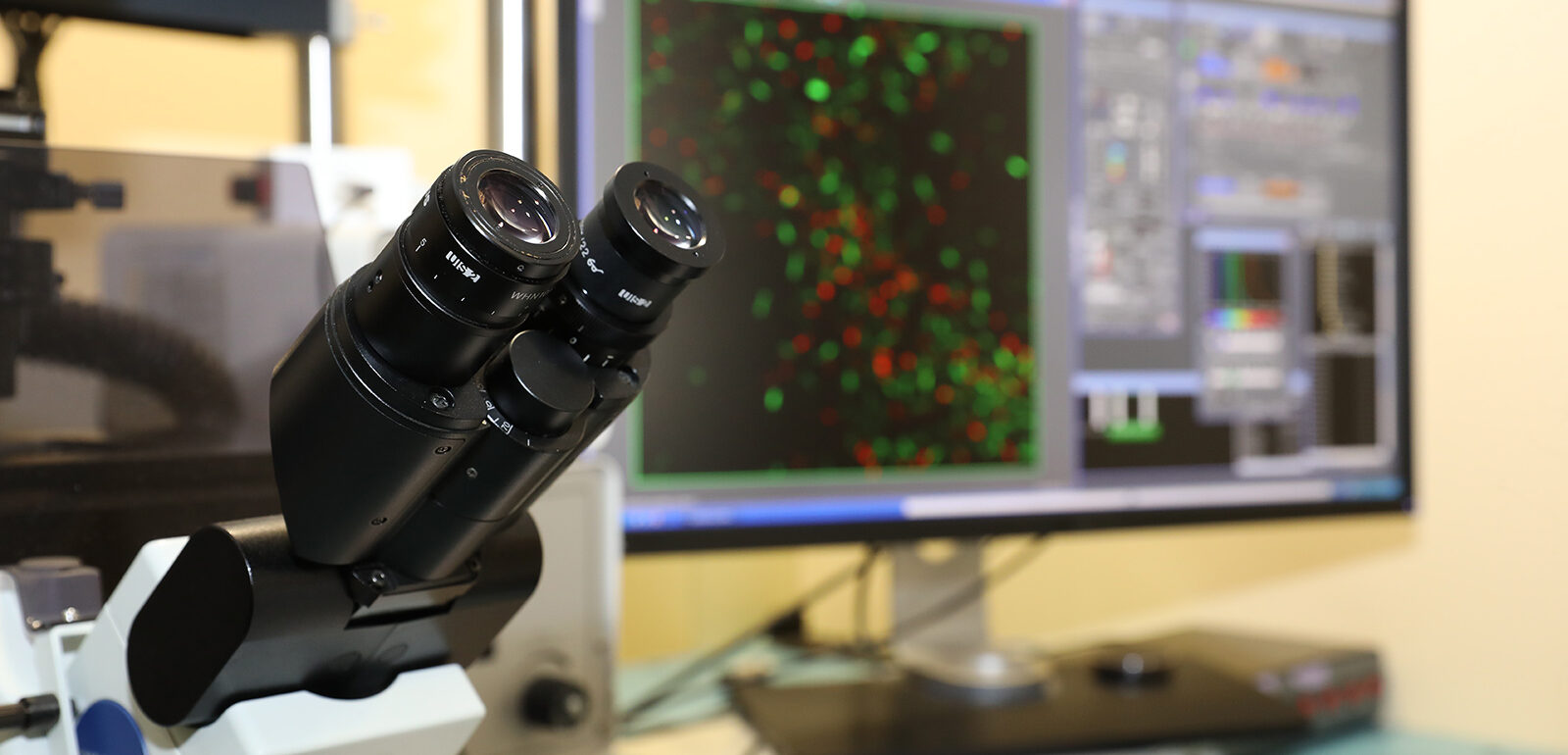Featured international projects

During 2024, VHIR registered 208 granted projects, of which 140 were national and 29, international. Here we present some featured international projects of this period.
UMBRELLA: Unleashing a CoMprehensive, Holistic and Patient Centric Stroke Management for a Better, Rapid, AdvancEd and PersonaLised Stroke Diagnosis, TreAtment and Outcome Prediction
Call: Horizon Europe. Innovation Health initiative (IHI)
PI: Carlos Molina
Over 1 million individuals in Europe suffer a stroke every year. In addition, nearly 10 million people are living with the long-term impacts of stroke, making it a leading cause of disability in adults in Europe and resulting in approximately 460.000 related deaths annually, according to recent studies. UMBRELLA is set to open a new era in stroke management by implementing a comprehensive approach that addresses gaps along the whole stroke care pathway, from diagnosis and emergency treatment, right through to rehabilitation and prevention of recurrent strokes.
In addition, the project will harness the potential of artificial intelligence (AI) and cutting-edge digital technologies to transform stroke diagnosis, reduce time to treatment and improve long-term clinical outcomes. It will also further the understanding of stroke and its underlying causes to advance prevention strategies.
The UMBRELLA is a public-private partnership under the leadership of Vall d’Hebron Research Institute (VHIR) from the clinical side and Siemens Healthineers as the industrial co-lead, brings together a consortium consisting of 7 top-tier hospitals in Spain, Italy, Belgium, Switzerland, Germany and the Netherlands, European Research Infrastructures and over 20 private organizations, from small startups to large multi-national corporations.
NANORESCAN: Nanocapsules combining novel drugs with conventional chemotherapy to cure resistant cancers
Call: ERA4Health
PI: Matilde Lleonart
Head and neck squamous cell carcinomas (HNSCC) have a high prevalence and lethality, mainly due to: their late diagnosis, the low availability of therapeutic alternatives for HNSCC patients and the acquisition of resistance to conventional therapies.
The membrane receptor TSPAN1 is an oncogenic protein involved in proliferation, migration and metastasis in several cancers. It has been recently described TSPAN1 key role in chemoresistance, as TSPAN1 depletion sensitizes HNSCC cells to cisplatin (CDDP) treatment. Through a virtual screening based on three different docking simulation programs and according to the Specs database, two drugs capable of blocking TSPAN1 were unveiled and patented showing promising results in mice. The project will focus on the best of these two drugs.
The ultimate goal of this Project is to combat HNSCC resistant tumors to conventional therapies (CDDP, docetaxel [DTX]) by developing a ground-breaking therapy based on new patented drugs encapsulated with CDDP or DTX into magnetoplasmonic nanocapsules (MAPSULES), which have already shown the capacity to amplify the local chemotherapy effects by external opto-magnetic actuation.
Demonstration of clinical benefits by the MAPSULES therapy will produce a transformational impact in current solid tumor treatments by offering an effective therapy with minimal side effects and cost effective, that can be readily applied to other drugs and solid tumors.
The project, under the leadership of Vall d’Hebron Research Institute (VHIR), is formed by 4 Institutions: VHIR, Institute of Microelectronics of Barcelona (IMB-CNM, CSIC), Institut Charles Sadron (ICS), France and Institute for Drug Research (IDR), Israel.
ERDERA: European Rare Diseases Research Alliance
Call: Horizon Europe. European Partnership on Rare Diseases
PI: Mar Mañú, Miguel Chillón, Simó Schwartz Jr
With an estimated overall budget of 380 million euros until 2031, ERDERA (European Rare Diseases Research Alliance ) aims to have a major impact on rare diseases by supporting patient driven research to develop new treatments and diagnostic pathways and harnessing the potential of health and research data, Artificial Intelligence (AI) and digital technologies. The partnership will be crucial in helping shape the European Research Area on Rare Diseases. To this end, ERDERA will promote the coordination and integration of national and regional research strategies, fostering public-private partnerships and global collaborations, and accelerating the transition from knowledge to viable solutions for patients. Ultimately, this alliance will make Europe a world leader in rare diseases research and innovation, boosting EU competitiveness and creating jobs.
The multidisciplinary team of more than 1400 professionals involved in ERDERA will contribute their expertise in preclinical, clinical and translational research; drug development and diagnosis innovation; biostatistics; data and regulatory science; research funding; social sciences and humanities; patient engagement or education.
The Vall d’Hebron Research Institute, as part of the ERN-EuroBloodNet coordination, will contribute to different work packages of this project. It will be responsible for the coordination of the European registry platform for patients with rare haematological diseases (ENROL) and the European registry platform for patients with rare anaemic disorders (RADeep). Dr Mar Mañú, principal researcher of the Childhood Cancer and Haematological Diseases Research Group at VHIR, is the Scientific Director of ERN-EuroBloodNet & ENROL Coordinator and has been a member of the IRDiRC Interdisciplinary Scientific Committee since 2023.
RESET TRIAL: Resetting the immunological system of hypersensitized transplant candidates to allow access to HLA compatible kidney transplantation
CALL: Instituto de Salud Carlos III
PI: Oriol Bestard
The main objective of the RESET trial is to overcome a major unmet need in kidney transplantation, which is to allow access to HLA compatible transplantation in highly sensitized patients that do not have any chance to receive a compatible organ offer. For reaching this goal, we aim to resetting the memory alloimmune repertoire of these patients and switch to a naïve protolerogenic immune system through autologous Hematopoietic Stem Cell transplantation (aHSCT) to ultimately induce a generalized deletion of HLAspecific T and B-cell clones involved in the production of anti-HLA antibodies.
Despite the increasing number of kidney transplants performed yearly worldwide, the number of patients on the waiting list is not reduced, and there is a permanent increase of highly sensitized patients (25-30%; 400.000 patients worldwide) who remain for very long time on dialysis if not for ever, due to the extremely low chance of finding a HLA compatible organ thus, having high comorbidity and mortality consequences.
The success of this new strategy, already proven successful in some autoimmune disorders, could be a complete game changer in the field of transplantation by allowing access to transplantation while reducing the burden of morbidity, mortality and health-care costs associated to chronic dialysis treatment and to iniefective desensitization therapies. Moreover, the investigation of the main mechanisms behind this strategy will provide new scientific insight on the main mechanisms of alloimmune rejection. With this project we tackle a major unmet need in transplantation that may have an unprecedented impact in the field.
TRAm-MAV: Improving Brain Arteriovenous Malformation Cure with local Antioncogenic Nanoparticle Embolization
Call: CaixaResearch Health 2024
PI: Marc Ribó
Brain arteriovenous malformations (bAVM) are tangles of dysplastic cerebral arteries and veins that converge at a vascular nidus without normal cerebral parenchyma. High blood flow in dysplastic vessels increases the risk of rupture, causing hemorrhagic stroke, particularly in young individuals, often resulting in poor outcomes. To avoid bleeding, therapeutic options include surgery, stereotactic radiosurgery, and endovascular embolization. However, no therapeutic approach is entirely efficacious without associated complications.
Recent discoveries show altered expression of proliferation-regulating signaling molecules, including mTOR and KRAS pathways, meaning that targeted therapies modulating those pathways could potentially reverse the abnormal vascular growth. Despite the efficacy of rapamycin and trametinib in inducing apoptosis in cultured cells from bAVM patients, their clinical application is limited due to their systemic side effects. Oral or intravenous formulations are not recommended. This study aims to develop innovative embolic formulations for direct injection of rapamycin and trametinib nanoparticles, promoting vessel apoptosis during embolization without systemic effects, repurposing existing drugs for a new application. The project will consist of three parts: Developing two embolic formulations, in vitro effectiveness evaluation and in vivo in animal measurement of the safety and efficacy.
In summary, we propose a novel treatment approach for bAVM patients that will involve a less invasive embolization treatment with local delivery of antiproliferative drugs, which induce apoptosis in bAVM endothelium.
Know more about the Facts & Figures of the Research Projects and Networks




